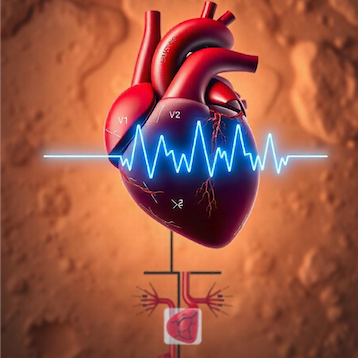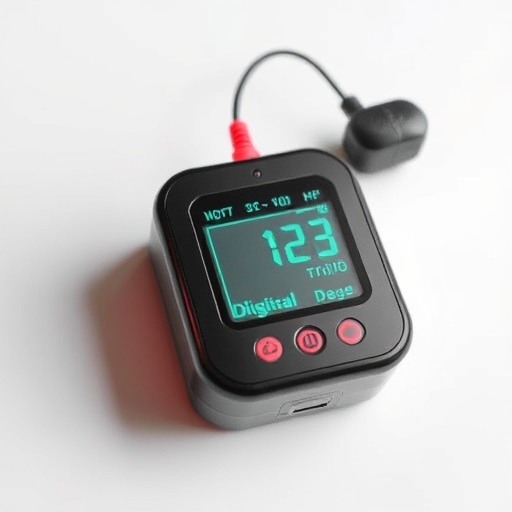Exercise capacity, iron deficiency and depressive symptoms in patients with asymptomatic chronic systolic heart failure

All claims expressed in this article are solely those of the authors and do not necessarily represent those of their affiliated organizations, or those of the publisher, the editors and the reviewers. Any product that may be evaluated in this article or claim that may be made by its manufacturer is not guaranteed or endorsed by the publisher.
Authors
Background: Iron deficiency (ID) is a common comorbidity in symptomatic heart failure (HF). It is associated with lower exercise capacity, anemia and poor quality of life and has proven to be a successful therapeutic target. In asymptomatic heart failure (NYHA 1) with reduced ejection fraction (HFrEF) however, prevalence of ID and its impact on exercise capacity, anemia and depressive symptoms are unknown.
Methods: We analyzed 364 asymptomatic HFrEF patients for ID, ID-associated impairment of exercise capacity, anemia, inflammation, ventricular overload and depressive symptoms. Exercise capacity was measured by 6-minute walk test (6 MWT), peak oxygen consumption per kg bodyweight (peak VO2) and breathing efficiency (VE-VCO2 slope). ID was defined as ferritin <100 µg/L or ferritin 100-299 µg/L with transferrin saturation (TSAT) <20% [European Society of Cardiology (ESC) guideline-recommended definition]. Iron status was also assessed by serum soluble transferrin receptor (sTfR). Inflammation was defined as serum C-reactive protein >5 mg/L. Depressive symptoms were diagnosed by Hospital Anxiety and Depression-Scale (HADS-D) score ≥11 and Patient Health Questionnaire 9 (PHQ-9) score≥10.
Results: Prevalences were 36.5% (29.3% absolute, 7.2% functional) for ID, 11% for anemia, 15.3% for inflammation and 6.5% (HADS-D) and 9.8% (PHQ-9) for depressive symptoms. The latter were similar in patients with/without ID (6.7% vs. 6.4%, p=0.46). Patients with ID had lower breathing efficiency (26.8±6.4 vs. 25.2±6.1, p=0.015), lower 6 MW distance (557 m±99 vs. 577 m±84, p=0.030), higher NT-pro BNP (545 ng/l [201; 1226] vs. 428 ng/L [195; 783], p=0.047), more often anemia (15.9% vs. 8.2%, p=0.015) and inflammation for functional ID (8/25 vs. 13/101, p=0.015). Patients with a TSAT<20% had lower 6 MW distance than those with a TSAT 20-25% or >25% (565±90 vs. 581±74 vs. 589±86 ms, p=0.003). In univariate regression models, we found higher sTfR to be associated with anemia (r=0.122, p<0.015), inflammation (r=0.118, p<0.02), ventricular overload (r=0.202, p<0.001) and lower exercise capacity in form of 6 MW distance (r=-0.138, p=0.007), which is similar to ID by ESC definition. In multivariable regression, only NT-pro BNP and in trend ID by ESC definition independently predicted lower breathing efficiency (p<0.001 and p=0.055, r=0.295). NT-pro BNP>1400 ng/L yielded 90% specificity for ID in ROC analysis.
Conclusions: ID is a common comorbidity already in asymptomatic HFrEF patients. In a multivariable model, NT-pro BNP and in trend ID independently predicted lower breathing efficiency. NT-pro BNP>1400 ng/L yielded 90% specificity for ID. An association of ID with worsening of breathing efficiency and transition to higher NYHA classes should be subject of further studies.
How to Cite

This work is licensed under a Creative Commons Attribution-NonCommercial 4.0 International License.
PAGEPress has chosen to apply the Creative Commons Attribution NonCommercial 4.0 International License (CC BY-NC 4.0) to all manuscripts to be published.
Similar Articles
- Elias Tassoulas, Dimitrios Tasoulas, Christos Papaconstantinou, Ioannis Chlorogiannis, Prognostic factors and outcome in patients submitted into coronary artery bypass surgery with total arterial myocardial revascularization , Global Cardiology: Vol. 2 No. 4 (2024)
- Ahmad Shabbir, Laiba Yumn, Esha Khan, Mavacamten’s therapeutic impact: cardiac-specific myosin inhibition in obstructive hypertrophic cardiomyopathy , Global Cardiology: Vol. 2 No. 3 (2024)
You may also start an advanced similarity search for this article.

 https://doi.org/10.4081/cardio.2024.39
https://doi.org/10.4081/cardio.2024.39















